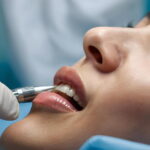Back pain is a pervasive and often debilitating condition affecting millions globally. One of the common culprits behind chronic back pain is disc herniation. This condition, also known as a slipped or ruptured disc, can result in significant discomfort and restricted mobility. Understanding the nature of disc herniation and effective treatment strategies is crucial for managing this condition and improving quality of life.
While traditional treatments for disc herniation include physical therapy, medications, and sometimes surgery, innovative therapies are emerging as potential game-changers. One such advanced treatment is Discseel, a minimally invasive procedure that aims to repair and seal damaged discs using fibrin, a natural protein used by the body in the clotting process. This method not only alleviates pain but also helps in the regeneration of disc tissue, making it a promising option for those suffering from herniated discs.
Discseel offers numerous benefits over conventional surgical procedures. It typically involves a shorter recovery time, reduced risk of complications, and less postoperative pain. Moreover, it addresses the root cause of disc herniation by promoting the healing of the torn annulus fibrosus, potentially providing long-term relief and improved spinal health.
Given the debilitating nature of disc herniation, exploring all available treatment options, including innovative ones like Discseel, becomes essential. Patients and healthcare providers can work together to develop a comprehensive treatment plan tailored to individual needs, enhancing the chances of a successful recovery and a better quality of life.
What is Disc Herniation?
The spine comprises a series of bones (vertebrae) cushioned by intervertebral discs. These discs act as shock absorbers, providing flexibility and support to the spine. Each disc has a tough exterior (annulus fibrosus) and a soft, gel-like center (nucleus pulposus). Disc herniation occurs when there is a tear in the annulus fibrosus, allowing the nucleus pulposus to protrude. This protrusion can press on nearby nerves, leading to pain, numbness, and weakness.
Disc herniation often results from age-related wear and tear, known as degenerative disc disease, although it can also be caused by physical trauma or improper lifting techniques. Individuals experiencing this condition may notice symptoms including localized back pain, sciatica, and muscle weakness, which can severely impact daily activities and overall quality of life.
An effective and innovative treatment option to consider is Discseel, which utilizes fibrin to repair and seal damaged discs, promoting natural healing and reducing the likelihood of recurrence. By addressing the root cause of the herniation, Discseel offers a less invasive and potentially more effective alternative to traditional surgical procedures. Understanding these treatment options is crucial for anyone suffering from disc herniation, emphasizing the importance of consulting healthcare professionals to develop a tailored treatment plan. This approach can significantly enhance recovery outcomes, enabling a return to normalcy and pain-free living.
Symptoms of Disc Herniation
The symptoms of disc herniation vary depending on the disc’s location and the severity of the nerve impingement. Common symptoms include:
– Localized Back Pain: The most prevalent symptom is a sharp or burning pain in the lower back.
– Radiating Pain: Pain may extend to other parts of the body, such as the buttocks, legs, or arms, known as sciatica when it affects the sciatic nerve.
– Numbness and Tingling: A herniated disc might cause a tingling sensation or numbness in the areas served by the affected nerves.
– Muscle Weakness: The muscles serviced by the compressed nerves may weaken, potentially impairing the ability to lift or hold objects.
Causes and Risk Factors
Several factors contribute to the development of disc herniation:
– Age: Age-related wear and tear (degenerative disc disease) can make the discs more susceptible to protrusion.
– Trauma: Injuries resulting from lifting heavy objects incorrectly or sudden impact can cause herniation.
– Genetics: A family history of disc herniation can increase individual susceptibility.
– Lifestyle: A sedentary lifestyle, obesity, and smoking can compromise disc health.
Diagnosing Disc Herniation
A thorough medical examination is essential for diagnosing disc herniation. Physicians generally use:
– Medical History and Physical Exam: Initial assessment to understand symptoms and physical signs.
– Imaging Tests: MRI and CT scans provide detailed images of the spine to confirm the diagnosis and locate the herniation.
Treatment Options for Disc Herniation
Treatment for herniated discs ranges from non-invasive methods to surgical interventions, depending on the severity of the condition:
Conservative Treatments
– Physical Therapy: Targeted exercises can strengthen the back muscles, improve mobility, and alleviate pain.
– Medications: Pain relievers, anti-inflammatory drugs, and muscle relaxants can help manage symptoms.
– Lifestyle Modifications: Weight loss, ergonomic adjustments, and quitting smoking aid in the treatment process.
Non-Surgical Interventions
– Epidural Steroid Injections: Administering corticosteroids near the affected nerve can reduce inflammation and pain.
– Chiropractic Care: Manual manipulation of the spine by a chiropractor may provide relief for some individuals.
Surgical Options:
Microdiscectomy: A minimally invasive surgery to remove the portion of the disc pressing on the nerve.
Laminectomy: A procedure removing part of the vertebrae to relieve pressure on the nerve roots.
Artificial Disc Replacement: In severe cases, replacing the damaged disc with an artificial one may be necessary.
Preventative Measures
Prevention is key to avoiding herniated discs. Some effective strategies include:
– Regular Exercise: Strengthening core muscles provides better support for the spine.
– Proper Lifting Techniques: Using the legs rather than the back to lift heavy objects minimizes injury risk.
– Ergonomics: Ensuring your workplace setup supports good posture and reduces strain on the spine.
– Healthy Lifestyle: Maintaining a healthy weight and quitting smoking enhance overall spinal health.
Conclusion
Disc herniation is a challenging condition, but understanding its symptoms, causes, and treatment options empowers individuals to manage and overcome back pain effectively. Through a combination of conservative treatments, potential medical interventions, and preventive measures, many can find relief and return to a pain-free life. One promising treatment option is Discseel, a minimally invasive procedure that uses fibrin to repair and seal damaged discs. Discseel can provide long-lasting relief by promoting natural healing of the disc tissue while reducing the risk of recurrence.
In addition to innovative treatments like Discseel, it is vital to consult with healthcare professionals who can offer personalized advice and develop the most appropriate treatment plan tailored to each individual’s needs. By being informed and proactive, patients can enhance their quality of life and manage disc herniation more effectively.
Did you find this helpful? Check out our other helpful articles on our website.
Read Also
- Exploring the Benefits of Infusion Therapy in OKC: The Ultimate GuideUnderstanding Infusion Therapy: A Deep Dive into Its Purpose and Process What exactly is Infusion Therapy? Infusion therapy is an advanced medical treatment that delivers medication and nutrients directly into the bloodstream through a vein, typically via an IV (intravenous) line. This method is particularly beneficial for patients who require a concentrated dose of medication,… Read more: Exploring the Benefits of Infusion Therapy in OKC: The Ultimate Guide
- Ketamine-Assisted Therapies: Impacts on Employee WellbeingWorkplace stress is common today. Many employees feel tired, anxious, or burned out. Regular therapy can help, but some people need more support. Ketamine-assisted therapy is showing good results for mental health. A ketamine-assisted therapist guides each session safely. This therapy can improve mood, focus, and energy. Learning more about it can help teams stay… Read more: Ketamine-Assisted Therapies: Impacts on Employee Wellbeing
- The Future of Men’s Health: Why Telehealth Is Here to StayTelehealth isn’t just a pandemic trend that faded into the background. For Australian men, it has become one of the most practical, time-saving, and stress-free ways to manage everyday health — and it’s shaping the future of how we access care. Platforms like DOCTO, an Australian online doctor and specialist telehealth service, are leading the… Read more: The Future of Men’s Health: Why Telehealth Is Here to Stay
- How to Build a Simple, Clean Skincare Routine ?You don’t need a complicated skincare routine. It doesn’t have to be something that requires twenty different products and confusing steps. Your routine works well with just a few high-quality clean ingredients. The beauty industry keeps pushing more products, but your skin actually needs less. You only need a simple approach to get better results… Read more: How to Build a Simple, Clean Skincare Routine ?
- How Preventive Dental Care Supports Overall HealthHave you ever wondered how a simple dental checkup could impact your entire body? Oral health is more than just a bright smile. Studies show that poor dental habits can contribute to serious health problems. Gum disease and tooth decay are linked to heart disease, diabetes, and infections. Yet, many people overlook preventive dental care.… Read more: How Preventive Dental Care Supports Overall Health
- Seeing Clearly in a High-Tech World: A Deep Dive into Advanced Vision Care ServicesProtecting your eyesight isn’t optional—it’s essential. Modern eye care has evolved far beyond basic exams, offering advanced diagnostics, personalized treatments, and surgical innovations that keep vision sharp for life. A leading example is Intermountain Eye Center, home to specialists like Dr Fishburn Boise, where patients receive comprehensive, high-level vision care designed to preserve long-term eye… Read more: Seeing Clearly in a High-Tech World: A Deep Dive into Advanced Vision Care Services
- Why the Keto Diet Works for Some People—and Fails Dramatically for Others: An Ayurvedic Breakdown for Modern HealthcareThe keto diet has dominated weight-loss culture for years. For some people, it produces rapid fat loss, stable energy, and improved mental clarity. For others—especially those who gain weight easily—it leads to burnout, digestive distress, rebound weight gain, high cholesterol, and a metabolism that feels slower than before. Healthcare often frames this as a discipline… Read more: Why the Keto Diet Works for Some People—and Fails Dramatically for Others: An Ayurvedic Breakdown for Modern Healthcare
- How to Choose the Best Assisted Living Facility for SeniorsAre you looking for the right assisted living facility for a senior loved one? Choosing a place can feel overwhelming. There are many factors to consider, from care services to the environment. Safety, comfort, and social opportunities play important roles in daily life. Each senior has unique needs and preferences that must be met. Understanding… Read more: How to Choose the Best Assisted Living Facility for Seniors









